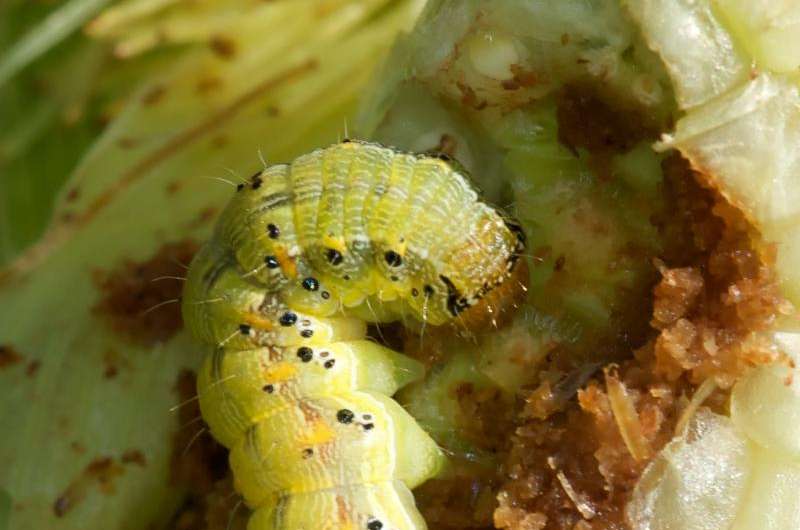Old World bollworm could pose serious threat to more than cotton and corn

Texas A&M AgriLife entomologists are advising producers about the possible arrival of a potential major new pest of field crops and vegetables in the U.S. if its ominous track-record in other countries is any indication.
The pest is the Old World bollworm, Helicoverpa armigera, and was recently detected in Florida. This is the first record of it in the continental U.S. after being discovered in Brazil in 2013, said Dr. Charles Allen, Texas A&M AgriLife Extension Service state integrated pest management leader in San Angelo.
"Our cotton bollworm, Helicoverpa zea, has been a pest of cotton and other crops in North America for as long as crops have been grown here," he said.
Allen said U.S. producers refer to the domestic bollworm as simply the cotton bollworm or corn earworm, depending on what crop it is damaging. But the rest of the world calls it the New World bollworm to differentiate it from its relative the Old World bollworm, arguably a much more ominous threat.
"The New World bollworm and the Old World bollworm, both have larval stages that become moths as adults, are very closely related and do similar damage to crops," he said. "But the Old World variety can attack an even broader range of plants, 180 kinds of plants that we know of as opposed to our bollworm, which eats fewer cultivated and wild host plants.
"Ours is susceptible to most insecticides and transgenic crops, but a key difference is that this invading cousin has become resistant to many classes of insecticides. Some strains in the Old World have even become resistant to the Bt toxins in transgenic crops, but to the best of our knowledge, the invading strain can still be controlled by this technology."
It's not clear how this Old World bollworm, common in China, India, Australia and other countries, came to be in South America, but it is clear it is in the Western Hemisphere now, Allen said.
Dr. Pat Porter, AgriLife Extension entomologist at Lubbock, said Texas crops that might eventually be affected include cotton, corn, sorghum, citrus, wheat and a variety of vegetables and other specialty crops.
"We don't know when or even if the Old World bollworm will arrive in Texas, but AgriLife Extension, Texas A&M AgriLife Research and the Texas A&M department of entomology are pre-emptively assembling a team of state, national and international experts to monitor the possible arrival of the insect in the southern U.S.," Porter said.
"Should the pest arrive, our immediate goals are to detect the pest as soon as possible, monitor its spread, determine its susceptibility to our insecticides and transgenic crops, and develop pest management strategies."
Because the Old World and New World bollworms are so closely related, Allen said it is not currently possible to use traditional pheromone traps to catch Old World bollworms without catching New World bollworms.
"The adult moths look identical and the only way to tell the two species apart is by dissection," Allen said. "The two insects can hybridize, so detecting hybrids between the two species will only be possible with molecular genetic techniques. So we are placing our early emphasis on developing molecular methods to distinguish the species and detect hybrids. That should make it quick and easy to tell whether there are any of the new pests being caught in the pheromone traps.
"Given that hybridization has already occurred between the Old and New World species in Brazil, this new monitoring effort will necessarily focus on the detection of invasive genomes as well as the more traditional idea of finding the separate invasive species."
Allen said the molecular genetic monitoring technique effort is being led by Dr. Greg Sword, AgriLife Research entomologist in the Texas A&M department of entomology, in collaboration with Dr. Tom Walsh and other scientists of the Commonwealth Scientific and Industrial Research Organization in Australia, which is at the forefront of developing genomic resources for these international pests.
"We have already begun coordinating with other entomologists across the southern United States to cooperate on the work of determining the Old World bollworms' susceptibility to insecticides and transgenic crops and monitor its spread in the U.S.," Sword said.
Provided by Texas A&M University




















